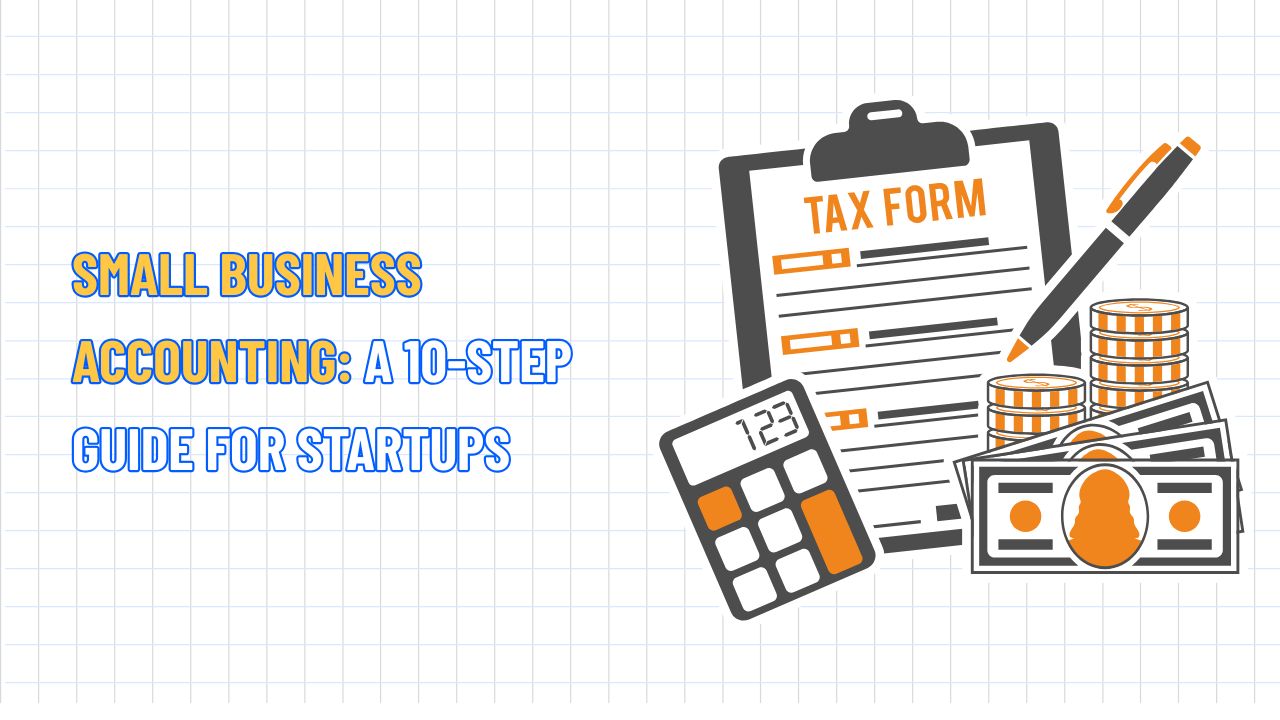Small Business Hardship Grants and Loans: A Comprehensive Guide
Table of Contents Hide
In the face of economic volatility, small business owners increasingly need reliable funding sources to maintain stability and recover growth. Small business hardship grants and loans provide critical support, helping companies navigate challenging periods without adding debt burdens. In the article below, join NextSky in exploring key details to help businesses overcome immediate difficulties and build a solid foundation for long-term development.

What are hardship grants for small businesses?
Hardship grants for small businesses are non-repayable funding provided by governments, nonprofits, or public-private partnerships to help companies weather financial difficulties. These grants are often applied in emergency situations like natural disasters, economic crises, or pandemics, without the repayment burden of loans. Grants are typically used to cover operating costs, repair assets, upgrade technology, restore business operations, or access development consulting. However, eligibility criteria are usually based on size, location, industry, or priority groups like women, minorities, and veterans.
Read more: What is A Small Business? A Comprehensive Guide to Definition
How to find hardship grants for small businesses?
Finding the right financial support requires proactive research and networking. Here are proven strategies to uncover opportunities:
1. Government resources
- Grants.gov: This is the central portal for all federal grants in the United States, especially suited for small business owners seeking financial opportunities. With this method, you can easily filter by "small business" criteria to discover relevant programs. Small
- Business Administration (SBA): Offers workshops, online resources, and local support offices to help businesses access loan and grant programs, particularly the Economic Injury Disaster Loan (EIDL) for tough times.
- State and local governments: Each state has its own programs to aid local business recovery and growth. For example, the California Small Business COVID-19 Relief Program once provided financial support to businesses with revenue declines during the pandemic.
2. Nonprofits and the private sector
- Community Development Financial Institutions (CDFIs): These organizations bridge financial gaps in underserved communities, offering grants and low-interest loans to give small businesses more local expansion opportunities.
- Hello Alice: This platform partners with major corporations like DoorDash to provide $10,000 grants for small businesses, especially restaurants affected by natural disasters.
- National Association for the Self-Employed (NASE): With growth grants worth $4,000, NASE is ideal for sole proprietors or small businesses looking to scale.
3. Networking and community engagement
- Small Business Development Centers (SBDCs): Funded by the SBA, these centers provide free one-on-one consulting and guidance to help businesses find area-specific grants.
- SCORE: With a nationwide network of mentors, SCORE is key to securing funding, strategies, and practical advice for sustainable growth.
- Chambers of commerce and local entrepreneur communities: Joining meetings, events, or business groups in your area expands connections and uncovers new opportunities, such as the FedEx Small Business Grant Contest worth $30,000.
4. Industry-specific grants
Some sectors have tailored support programs designed to address unique challenges:
- Restaurant industry: Restaurant Disaster Relief Fund – provides $10,000 for restaurants impacted by natural disasters.
- Agriculture industry: USDA Disaster Assistance Program – offers funding for farmers facing losses from droughts, wildfires, or livestock damage.
- Technology industry: Small Business Innovation Research (SBIR) – funds startups with innovative ideas serving agencies like NASA or the EPA, encouraging applied research and innovation.
5. Networking and staying informed
- Professional meetups: Platforms like Meetup facilitate connections with other business owners who can share grant or loan opportunities through word-of-mouth.
- Social media and alerts: Set up Google Alerts for phrases like "hardship grants for small businesses" or follow organizations like Hello Alice on platforms like X for real-time updates.
Read more: TOP 13 Small Business Grants for Veterans that You Shouldn't Miss
Types of hardship grants for small businesses
Hardship grants come in various forms, scopes, and funding sources. Here are the common types available in 2025:
-
Disaster and crisis response grants
- Restaurant Disaster Relief Fund: Managed by Hello Alice, this grant provides up to $10,000 for restaurants affected by state- or federally declared disasters.
- USDA Disaster Assistance Program: Supports farmers and ranchers with livestock or crop losses from droughts, wildfires, or floods.
-
Industry-specific grants
- Technology and innovation grants (SBIR): For tech startups and applied research businesses.
- Service and retail industry grants: Aid restaurants, e-commerce stores, or businesses disrupted by supply chain issues due to market fluctuations.
-
Demographic-focused grants: These grants promote equity and opportunity for underrepresented entrepreneurs:
- Minority-owned business grants: Organizations like the Association for Enterprise Opportunity (AEO) often fund businesses owned by Black or minority communities.
- Women-owned business grants: Programs like the Visa Everywhere Initiative offer funding, mentoring, and global networking for women-led businesses.
-
General small business grants: These apply to businesses in growth phases or managing general financial issues:
- Small Business Growth Fund: Provides up to $25,000 for high-potential businesses to expand markets and upgrade facilities.
- Amazon Small Business Grants: Offers $15,000–$25,000 for Amazon sellers contributing positively to communities or creating sustainable social impact.
Read more: Small Business Finances Management from A-Z You Can't Miss
Top hardship grant and loan programs for small businesses
-
SBA Economic Injury Disaster Loan (EIDL)
- Type: Loan Amount: Up to $2 million
- Purpose: Cover working capital needs like payroll, rent, or inventory.
- Eligibility: Businesses in federally declared disaster areas with proven economic injury.
- How to apply: Visit sba.gov to submit online.
-
Restaurant Disaster Relief Fund
- Type: Grant Amount: $10,000
- Purpose: Support restaurants impacted by natural disasters.
- Eligibility: Businesses in state- or federally declared disaster areas.
- How to apply: Sign up for updates at helloalice.com.
-
USDA Disaster Assistance Program
- Type: Grant Amount
- Varies Purpose: Compensate farmers for livestock or crop losses due to natural disasters.
- Eligibility: Farmers in affected areas with verified losses.
- How to apply: Contact the Farm Service Agency.
-
Small Business Growth Fund
- Type: Grant Amount: $25,000
- Purpose: Help high-growth businesses expand operations.
- Eligibility: U.S.-based businesses with clear growth plans.
- How to apply: Submit via helloalice.com.
-
Visa Everywhere Initiative
- Type: Grant Amount: $10,000–$100,000.
- Purpose: Support tech startups with innovative solutions.
- Eligibility: Open to global startups, with bonuses for women- and minority-owned businesses.
- How to apply: Check visa.com for deadlines.
How to apply for hardship grants and loans
To boost your chances of success, follow these steps carefully. Here's a detailed guide presented in short, clear, and easy-to-understand paragraphs.
- Verify eligibility: Before applying, review all program conditions for the grant or loan. Approval criteria often focus on size, operating location, or damage level, with priority for groups like women, minorities, or veteran owners.
- Gather documentation: Attach tax returns, financial statements, revenue decline proof, business licenses, and a clear fund usage plan to demonstrate the funding's purpose and impact.
- Craft a compelling application: Clearly outline challenges and a strategic roadmap for using the support to maximize positive effects, such as stabilizing your workforce and increasing societal value contributions.
- Seek expert guidance: If the application process is tricky, get help from SBDC advisors to refine your file and maximize approval odds.
Read more: Small Business Loans for Women: 7 Options You Can't Miss
Tips to maximize success when applying for funding
- Diversify applications: Submit to multiple grant, loan, or support fund programs to broaden your success chances and reduce reliance on a single source.
- Build positive connections: Join associations or local business communities to exchange experiences and get early info on new funding programs. Proactively expanding your network can help you avoid missing valuable opportunities.
- Stay organized: Plan meticulously by maintaining a spreadsheet tracking deadlines, requirements, and application statuses for each program. This keeps the process efficient and avoids unnecessary errors.
- Be transparent and authentic: Clearly present your business's current struggles and how the funding will help overcome them. Transparency builds trust with funders and showcases your sustainable growth vision.
Hardship grants and loans for small businesses are powerful tools to overcome financial challenges. For businesses using NextSky's Shopify solutions, these funding sources can accelerate digital growth, enhance customer experiences, and build long-term resilience. Start exploring funding opportunities today to ensure your business thrives sustainably.










